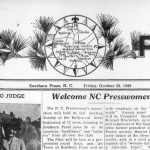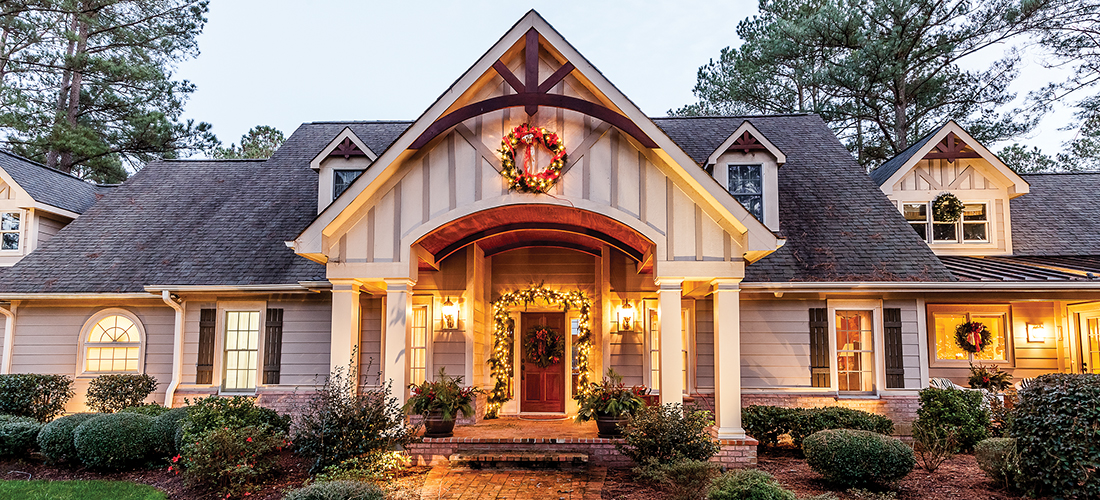
Worldwide religious art backdrops the holiday in Whispering Pines
By Deborah Salomon • Photographs by John Gessner
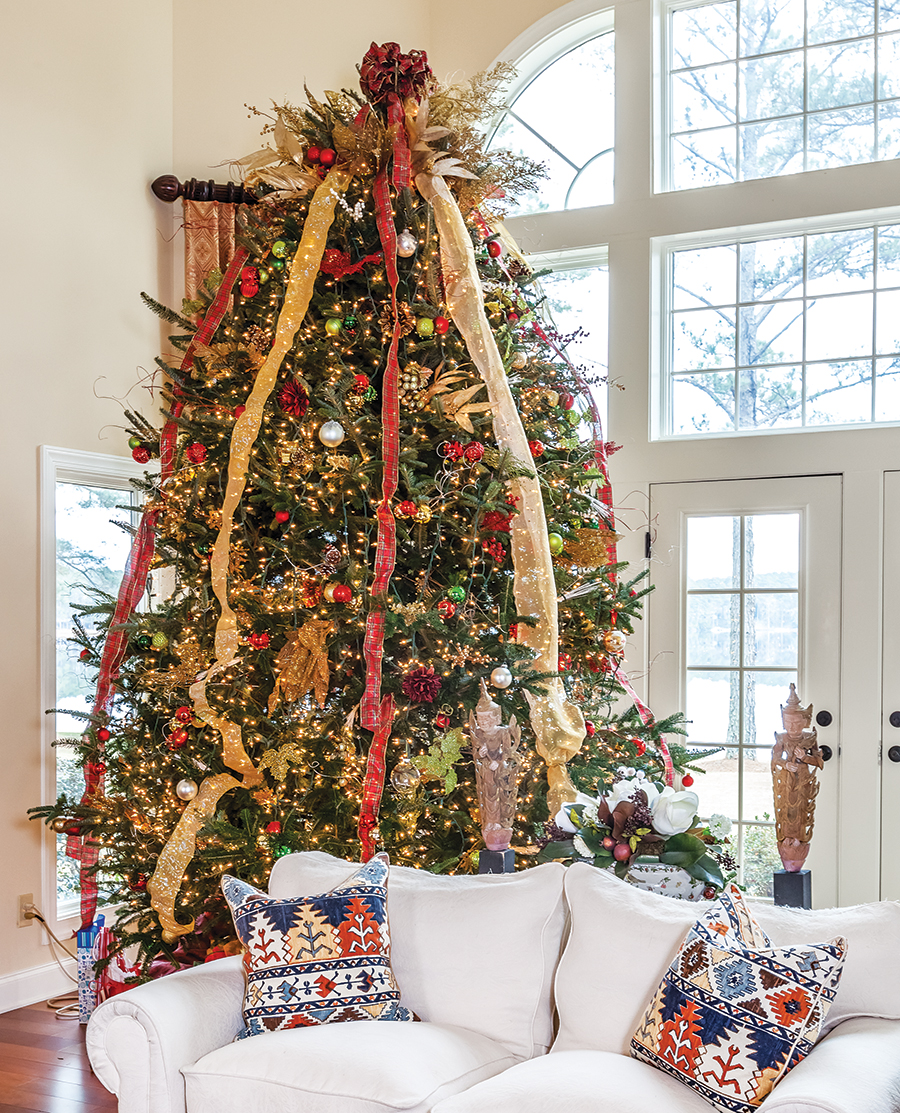
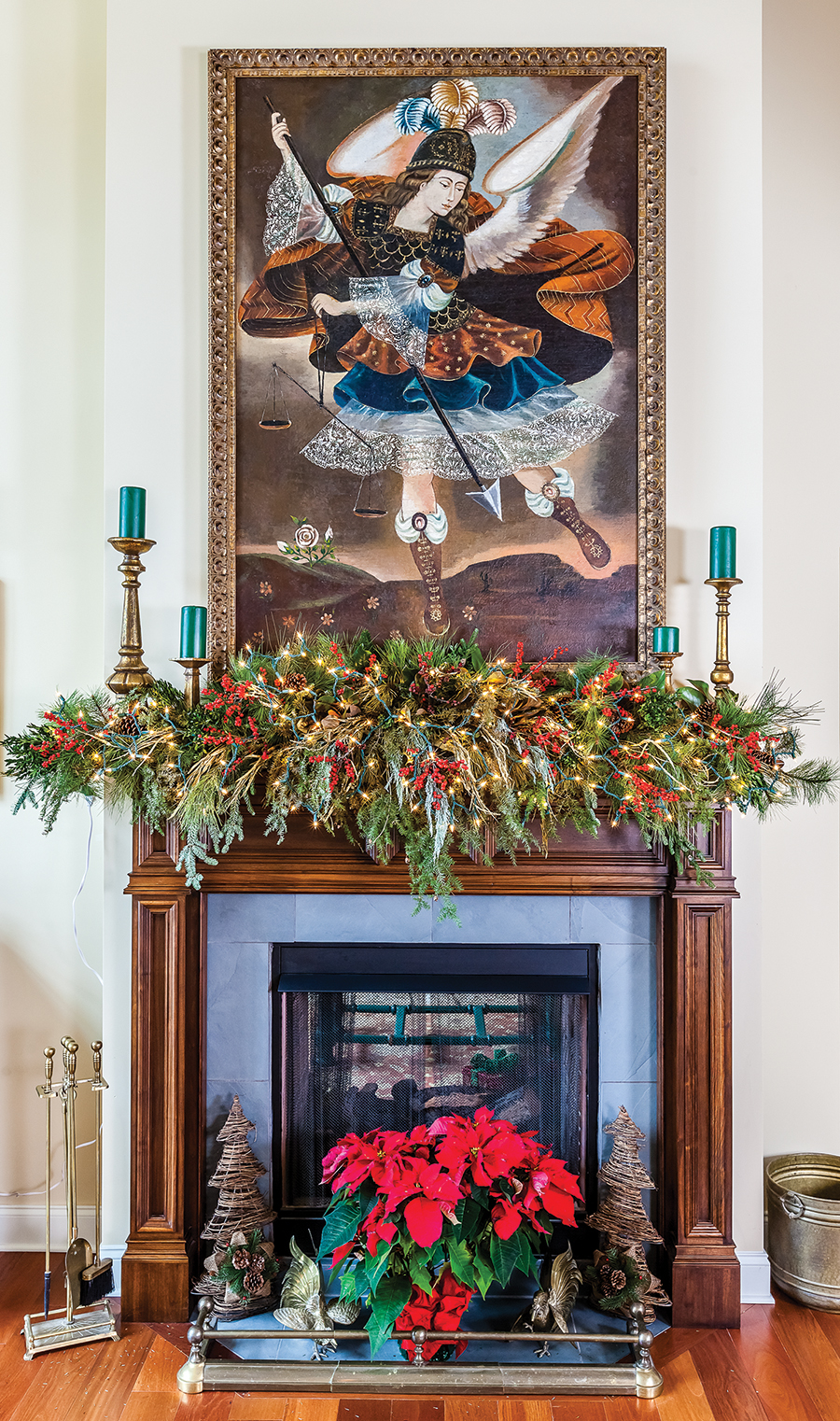
Centuries before Santa, Rudolph, Alvin and Frosty, decorating for Christmas meant festooning the Madonna, Baby Jesus and saints with ribbons and greenery. The custom endures at the lakefront residence of Emi and Colin Webster.
“Christmas is a religious holiday, after all,” Colin observes, still allowing a 13-foot tree to dominate a living room with an 18-foot ceiling.
Now, their sons grown, only one small St. Nicholas remains.
Aside from respecting the sacred, the Websters’ interest springs from art collected while living, working and traveling the globe. For openers, Emi was born in Chile of British/French/Chilean lineage, schooled in England, Argentina, Germany and Switzerland. She met Colin, of a similar Scottish/European background, in kindergarten, in Chile, where their parents had attended each other’s weddings.
“Then we went our separate ways,” Colin says. He reconnected with Emi, an advertising executive, on holiday in Spain in 1986. They married the following year, honeymooned in Wales (where the collecting began) and settled in Chile.
“Before that, I had a bachelor’s pad,” Colin continues. After marriage “I looked at life differently.” Subsequently, as an executive at Proctor & Gamble and other multinationals, Colin was posted on six continents with artifacts to prove it.
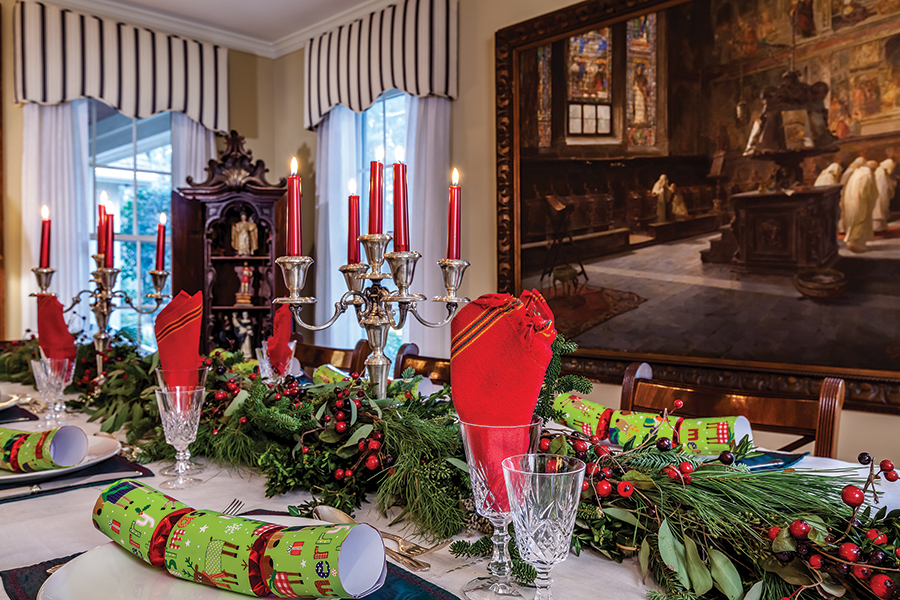
Made sense to acquire treasures, small and enormous, while employers subsidized shipping.
But with such glamorous options, how did they land in Whispering Pines, on a 4-acre peninsula jutting into Lake Thagard?
After an early retirement Emi and Colin (who had also lived in Miami) investigated places to settle. Colin’s father purchased a house in Southern Pines in 1980; Emi and Colin visited often, deciding that after 13 moves and many schools the U.S. was better for their sons’ education. They bought a home in 2001, later 100 acres with the intent to build, which they decided would involve too much maintenance. Then one day they saw a For Sale sign on the prime peninsula property and snapped it up based on the view, knowing the house could be transformed — an understatement, since Colin, bored with retirement, had become a home-builder familiar with the finest materials and workmanship, while Emi had turned to real estate brokerage.
No architect or interior designer was required to almost double the existing 3,500 square feet by extending the footprint beyond the core and rearranging interior space to suit their needs and fit their furnishings, which include two glass-topped coffee tables with turned bases made by Colin. By working round the clock, the renovation and additions were completed, unbelievably, in 30 days, while the family lived on the upper floor.
“I didn’t have a kitchen so we ate take-away for a month,” Emi recalls.
The finished product includes park-like landscaping, a saltwater pool, pool house with dining area.
Colin’s method: Never start without a plan in hand. Don’t figure out as you go. Living in the house for several years had uncovered what needed changing. Being an accomplished woodworker helped. When Colin couldn’t find the right mantel he built one.
The result appears rather formal, slightly European, described as British Colonial, with Georgian overtones and a flash of Latin fire, yet comfortable — a place where the dog can stretch out on a sofa upholstered in High Point.
“This is how we grew up, surrounded by Spanish things,” Colin says. “You develop an affinity for them.”
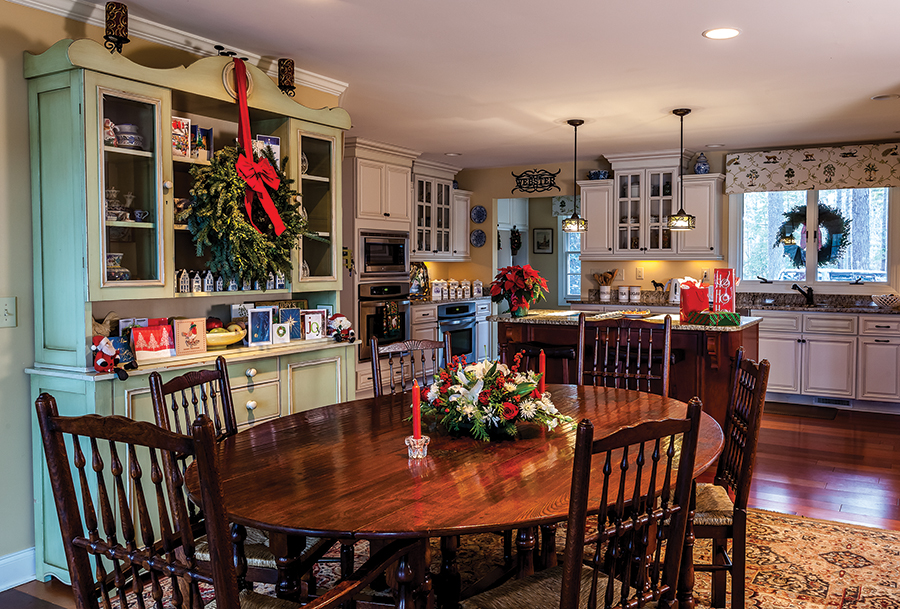
Their most treasured “things,” however, remain museum-quality art, with Colin and Emi enthusiastic docents: A Peruvian Madonna painted, in part, by Jesuits in the late 1600s dominates one living room wall facing an equally massive archangel over Colin’s mantel. Shelves and tables hold santos — figurines of saints common in Catholic South America. Another Peruvian Virgin Mary greets guests in the entrance hall, while a wall niche resembling a shrine displays a French Madonna flanked by Venetian lanterns.
Colin brought back exquisite Russian Orthodox icons during an era of political unrest, when their value had plummeted, also Byzantine/Greek paintings and triptychs originating in churches or monasteries.
Colin is especially proud of a 16th century Spanish bargueno, or traveling desk, with carved and inlaid olivewood drawers, that would travel with a nobleman’s retinue.
From farther east they obtained a hand-sewn Egyptian panel, brass and copper urns from an Arabian bazaar. In the family room, built-in shelves hold their collection of pre-Columbian pottery.
Persian rugs on polished cherrywood floors delineate paths from area to area.
America, their adopted homeland, has not been neglected. In his office, Colin, a Civil War buff, displays a camp chair with battle names, including Appomattox, carved into the frame; also a Union Colt musket and functioning post-Confederate “machine gun” with bullets, manufactured in 1898 — one of only 10 in the U.S.
Delft liquor-bottle miniatures representing houses in The Hague, once given to passengers on KLM, and Royal Doulton Toby face jugs from Colin’s grandmother line the shelves of a kitchen hutch.
The kitchen itself, with a clear sight line past the family dining room to the lake, is more restrained than luxury food preparation palaces. Colin added panels to the serviceable 24-year-old double Sub-Zero and used a smooth electric cooktop instead of the requisite Viking or Wolf gas range. But two oversize ovens were necessary for Christmas and Thanksgiving meals attended by family and guests, served from a dining room table with a garland running down the center, composed of berries and greenery, designed by Carol Dowd of Botanicals.
“Emi likes things that are very natural, organic,” Colin says. “We use wreathes and put tons of greenery (alongside) their stuff,” which complements the ecclesiastical mode better than glitter.
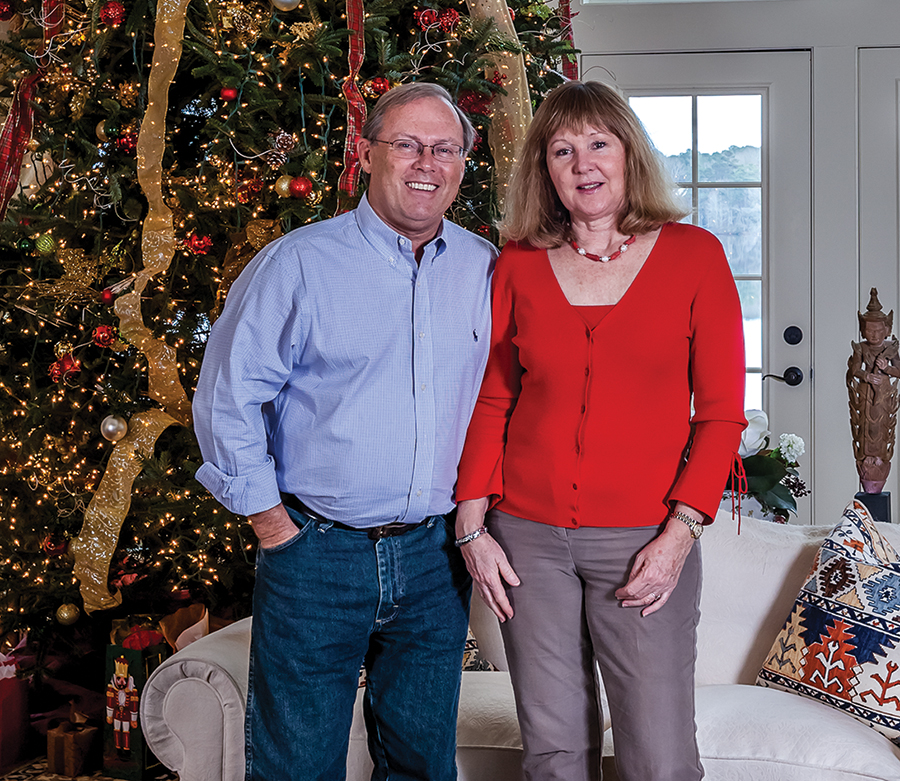
Decorating the skyscraper tree with ornaments commemorating family events, topped by an angel from Germany, takes about two days. Magnolias and fresh flowers are added before the Websters’ famous Christmas party, where the space accommodates 100 guests.
On Christmas Eve the family gathers for a traditional Argentinean breaded veal dish and mince pies imported from England. Christmas morning, Colin and Emi sleep in while the boys unload their stockings, including ones for Bantu, the dog, and Panda, the cat. Later in the day, while the surround sound system plays Christmas music inside and out, guests arrive for a turkey (sometimes ham or roast beef) dinner ending with flaming English Christmas pudding.
Decorations stay in place until Twelfth Night, Jan. 6, when they are packed and stored, leaving the Madonnas, Magi and santos on their own.
“Afterward, the house seems so empty,” Emi says. Because, although they call their home Amancay, after an Andean day lily, . . . this is a house built for Christmas.” PS

